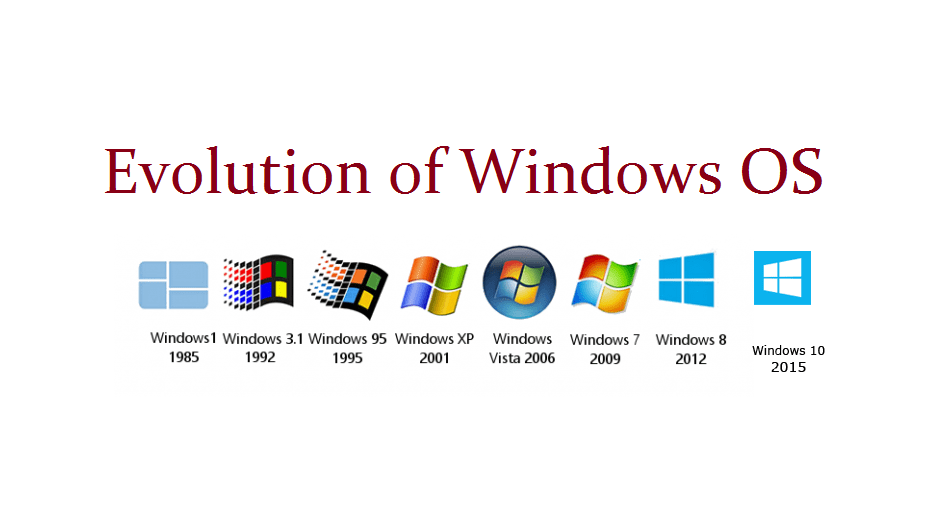
Microsoft Windows has been a dominant force in the personal computing world for decades. From its humble beginnings in 1985 to the modern Windows 11, the operating system has evolved significantly. In this blog post, we’ll explore the complete history of Windows, including launch dates, discontinuation dates, and key features of each version.
The Evolution of Microsoft Windows
1. Windows 1.0 (1985)
- Launch Date: November 20, 1985
- End of Support: December 31, 2001
- Key Features:
- First graphical user interface (GUI) for MS-DOS.
- Included apps like Paint, Notepad, and Calculator.
- Supported multitasking with tiled windows.
2. Windows 2.0 (1987)
- Launch Date: December 9, 1987
- End of Support: December 31, 2001
- Key Features:
- Introduced overlapping windows.
- Allowed keyboard shortcuts (Ctrl+Alt+Del).
- Early versions of Word and Excel debuted here.
3. Windows 3.0 (1990) & Windows 3.1 (1992)
- Launch Date: May 22, 1990 (3.0) / April 6, 1992 (3.1)
- End of Support: December 31, 2001
- Key Features:
- First commercially successful Windows version.
- Introduced Program Manager and File Manager.
- Supported 256-color graphics.
4. Windows 95 (1995)
- Launch Date: August 24, 1995
- End of Support: December 31, 2001
- Key Features:
- Revolutionary Start Menu and Taskbar.
- Introduced Plug and Play hardware support.
- First version with built-in Internet Explorer.
5. Windows 98 (1998) & Windows ME (2000)
- Launch Date: June 25, 1998 (98) / September 14, 2000 (ME)
- End of Support: July 11, 2006 (98) / July 11, 2006 (ME)
- Key Features:
- Improved USB and DVD support (Win98).
- System Restore feature (WinME).
- Last DOS-based Windows version.
6. Windows 2000 (2000)
- Launch Date: February 17, 2000
- End of Support: July 13, 2010
- Key Features:
- Targeted business users.
- Introduced NTFS file system.
- Improved stability and security.
7. Windows XP (2001)
- Launch Date: October 25, 2001
- End of Support: April 8, 2014
- Key Features:
- One of the most loved Windows versions.
- New Luna visual style.
- Fast user switching and improved networking.
8. Windows Vista (2007)
- Launch Date: January 30, 2007
- End of Support: April 11, 2017
- Key Features:
- Introduced Aero Glass UI.
- Enhanced security with User Account Control (UAC).
- Faced criticism for performance issues.
9. Windows 7 (2009)
- Launch Date: October 22, 2009
- End of Support: January 14, 2020
- Key Features:
- Improved performance over Vista.
- Snap window feature and better taskbar.
- Highly popular among users.
10. Windows 8 (2012) & 8.1 (2013)
- Launch Date: October 26, 2012 (8) / October 17, 2013 (8.1)
- End of Support: January 10, 2023 (8.1)
- Key Features:
- Touch-optimized Metro UI.
- Removed Start Menu (later brought back in 8.1).
- Faster boot times.
11. Windows 10 (2015)
- Launch Date: July 29, 2015
- End of Support: October 14, 2025
- Key Features:
- Return of the Start Menu.
- Cortana virtual assistant.
- Regular updates via Windows as a Service (WaaS).
12. Windhttps://lapzio.com/ows 11 (2021)
- Launch Date: October 5, 2021
- Current Status: Actively supported
- Key Features:
- Redesigned, centered Start Menu.
- Snap Layouts for multitasking.
- Android app support via Amazon Appstore.
Conclusion
Microsoft Windows has come a long way since its early days. Each version introduced new features, improved usability, and adapted to changing technology trends. While some versions like XP and 7 became fan favorites, others like Vista and 8 faced criticism. Today, Windows 11 continues the legacy with a modern, user-friendly design.
Which Windows version was your favorite? Let us know in the comments!



Leave a Reply